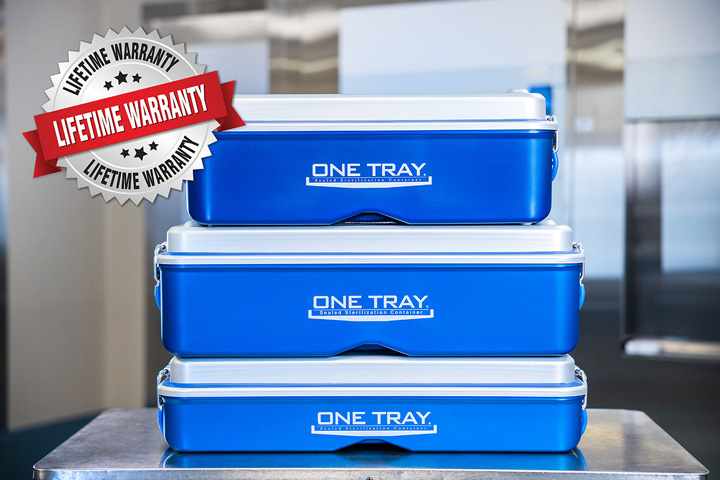Rigid sterilization containers can prevent harm to patients, staff and your surgical schedule.
 Ron Hester Photography
Ron Hester Photography THE LONG GAME Because rigid containers protect instruments and extend their lifespans better than blue wrap, the future savings they create often exceed their high upfront cost.
If your reprocessing techs handle a high volume of complex instrumentation day in and day out, it’s imperative that they take every measure possible to ensure these expensive tools are both handled correctly and sterilized properly. It’s vital not just to protect patients from harm by limiting the risks of surgical site infections, but also to the surgeons who demand precision and don’t want to find themselves in a situation where an instrument malfunctions or is broken.
To keep instruments safe from harm and to maintain sterility in storage, many surgical facilities and their sterile processing departments (SPDs) have moved on from blue-wrapping instruments by investing in rigid sterilization containers. Hospital for Special Surgery (HSS) in New York is an example of a facility that relies heavily on rigid sterilization containers to keep its instruments secure and sterile.
“Unlike instrument trays wrapped in blue wrap, you can stack containers in storage two at a time, one on top of the other, as long as they are the same size,” says Richard Ortiz, CRCST, senior director of central sterile processing and durable medical equipment at HSS. “Rigid containers are made of stainless steel or anodized aluminum, which are sturdy materials that won’t easily bend or crack.”
Rigid containers are particularly useful for processing and storing heavy, bulky orthopedic tools that strain and stretch blue wrap, leading to tears and even injuries to staff members who move or handle the trays. Additionally, when these tears occur, precious time is wasted. “Once the blue wrap is punctured, our department is forced to reprocess the tray, which can cause unwanted case delays that a busy surgical facility cannot afford,” notes Ms. Ortiz. “Rigid containers eliminate these concerns because they protect instrument sets much more effectively and consistently than blue wrap and tape do.”
Mr. Ortiz says your case volume will determine how many rigid containers your SPD might need and how long they will last. “The containers require a significant upfront investment but are much more cost effective than blue wrap in the long run,” he says. “For me and my busy staff, the rigid container is always the better and safer option.”
.svg?sfvrsn=be606e78_3)


.svg?sfvrsn=56b2f850_5)